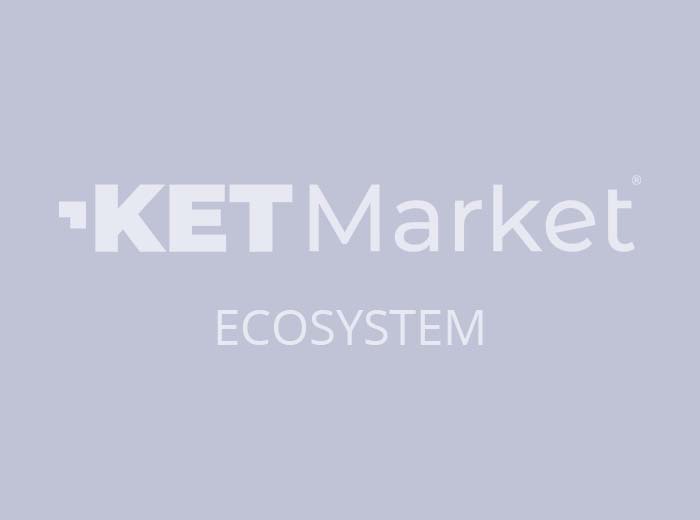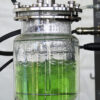
The riches in Europe’s mountains of metals waste
Waste from the production of aluminium, nickel and other industrial materials offers the EU an opportunity to advance its recycling goals.
In the western Irish city of Limerick, on the site of an aluminium refinery, a 500-metre paved road is built on an experiment that could help Europe reduce industrial waste.
The concrete stretch at the Aughinish refinery has a foundation made of materials that include bauxite residue, which is also known as red mud.
Muddy matters
Red mud is what gets left over from the production of aluminium – the metal that goes into everything from kitchen foil and beer cans to electric cars and aircraft fuselages. Aluminium comes from bauxite, an aluminous rock formed from a reddish clay soil.
While aluminium has myriad commercial uses in modern life, bauxite residue doesn’t. The slurry usually ends up in landfills, takes up growing amounts of space and represents a missed recycling opportunity.
A group of researchers received EU funding to help tackle these three challenges and came up with the idea of using bauxite residue for the road at the Aughinish aluminium refinery. Their project, called RemovAL, ran for five years through April 2023.
‘Landfilling is a practice that we want to move away from,’ said Dr Efthymios Balomenos, who co-led the project. ‘Even if there is zero harm to the environment, you are still using up lots of space and throwing away half your material.’
Simple numbers show the test for industry and society: every tonne of aluminium produced results in around two tonnes of bauxite residue.
Each year, about 150 million tonnes of red mud worldwide emerges from aluminium production – or 20 kilogrammes per person globally. Of that total, no more than 3% is recycled and the rest gets dumped.
Globally, more than 4 billion tonnes of bauxite residue are in storage and the figure could more than double to 10 billion tonnes by 2050, according to the Aluminium Stewardship Initiative, a standards-setting organisation that is urging “breakthrough solutions” for red mud.
Idea labs
Bauxite is named after the French town of Les Baux where the ore was discovered in 1821.
Europe produces around 7 million tonnes of bauxite residue annually. The red mud gets piled up to create artificial hills, which offer the EU an opportunity to advance its goal of creating a circular economy involving more recycling and less waste.
RemovAL featured a range of academic and industrial participants including Aughinish Alumina, Rio Tinto in France and Greek mining and metallurgy company Mytilineos.
The project ran demonstrations at industrial sites in Germany, Greece and Ireland, testing ideas for potential commercial uses of bauxite residue.
The prime aims were to reduce waste and do so in a way that avoided big extra costs.
‘Our goal was to get to near break-even and near zero waste,’ said Balomenos, who is a consultant at Mytilineos.
Roads ahead
The RemovAL team demonstrated that bauxite residue can be used as the first foundation layer, or subbase, for roads.
Usually made from low-grade crushed stone, the subbase of a road lies on the ground and provides a stable platform for the next, higher-quality foundation layer.
At the Aughinish refinery, the bauxite residue was laid, compressed and levelled with standard road-building equipment.
Since being constructed, the road has been monitored for more than a year to show that no chemicals seep out.
RemovAL also showed that useful materials can be extracted from bauxite residue, boosting EU efforts to reduce reliance on foreign suppliers of essential industrial commodities.
Typically, bauxite residue is around two-fifths iron oxide, one-fifth aluminium oxide, 6% silica and 5% titanium. Red mud even contains rare earths – a group of 17 metallic elements with special properties that facilitate technological advances in a range of industries.
‘It’s a lot of material, even if you just look at it as a potential iron source,’ Balomenos said.
At the sites in Greece and Norway, the project smelted bauxite residue in an electric arc furnace to produce an iron alloy suitable for use in the manufacture of steel.
RemovAL also extracted the rare earth scandium, used in the aerospace industry for ensuring strength and corrosion resistance in components.
After this, the remaining residue was used to create material that can be added to the mix for cement.
While the demonstrations were a technical success, Balomenos said cost hurdles remain – mostly because the options for reusing bauxite residue are less profitable than using locally sourced ‘‘virgin’’ raw materials.
‘In the end, landfilling is the only financially viable option for the industry,’ he said.
Balomenos said that, to green the aluminium sector, Europe will need to offer incentives such as subsidies or regulations to encourage the use of bauxite residue and other metallurgical by-products over newly mined raw materials.
More metals
The metals-waste challenge in Europe extends well beyond aluminium.
Other EU-backed researchers, grouped under a project called NEMO, sought to find commercial uses for stockpiles of waste that result from the mining of copper, zinc, lead and nickel.
Europe has an estimated 28 billion tonnes of ore residues known as tailings from the past production of these metals, with a further 600 million tonnes being produced every year.
Copper, zinc, lead and nickel are vital for powering Europe’s green transition. Without them, wind turbines, electric vehicles and many other clean technologies would be impossible.
But the tailings have an environmental footprint of their own. This waste is often left in tailing ponds, contains sulphur and – when exposed to rain – produces sulphuric acid.
‘This sulphuric acid can start leaching out potentially hazardous elements to the environment, soil and water,’ said Dr Peter Tom Jones, director of the KU Leuven Institute for Sustainable Metals and Minerals in Belgium. ‘Acid mine drainage is one of the most important problems with the mining industry when dealing with sulphidic ores.’
Promising technique
Jones was part of NEMO, which ended in November 2022 after four and a half years.
The researchers used sites in Finland and Ireland to test the feasibility of a technique known as bioleaching to remove valuable metals from mine tailings and convert the remaining waste into a material that not only is safer but also could act as an additive in cement manufacturing.
Valuable metals can already be recovered from tailings through a process called leaching. Chemicals, usually acids, are used to dissolve the metals and leach them out of the waste so that they can be recovered.
While similar to chemical leaching, bioleaching gets living organisms to do the work. Microbes feed on elements in the mine waste and then create an acidic environment that dissolves the metals.
The process has the potential to be cheaper and more effective than chemical leaching.
The researchers demonstrated that bioleaching is a feasible way to recover metals like nickel from tailings. And the metal quality would be good enough for, say, battery production.
They also found that, with extra recovery processes, bioleaching could extract valuable rare earths from certain mining waste.
Furthermore, after bioleaching, the waste was less acidic and could be transformed into an additive for cement mixes.
Cost questions
But as with the RemovAL team, the NEMO researchers found that these processes are too costly at present to be commercially appealing.
‘It’s one thing to develop the technology to convert tailings into recovered metals and construction materials,’ Jones said. ‘It is something completely different to do that in a way that is economically feasible.’
He said that relatively low quantities of critical metals in the tailings mean operational costs tend to be higher than the potential revenue and that, as a result, mining raw materials is often a cheaper option, especially when done in low-cost countries where environmental, social and governance – ESG – standards are lower.
Nonetheless, NEMO has helped produce technologies that point the way to the efficient recovery of metals from mined materials and that clean up waste.
With the right regulatory framework and incentives, bioleaching and similar emerging technologies could become more economical. Meanwhile, these processes can help Europe meet a goal to expand supplies of critical raw materials by clearing up tailings and improving ore extraction.
By MICHAEL ALLEN
This article was originally published in Horizon, the EU Research and Innovation magazine






The riches in Europe’s mountains of metals waste 0 reviews
Login to Write Your ReviewThere are no reviews yet.